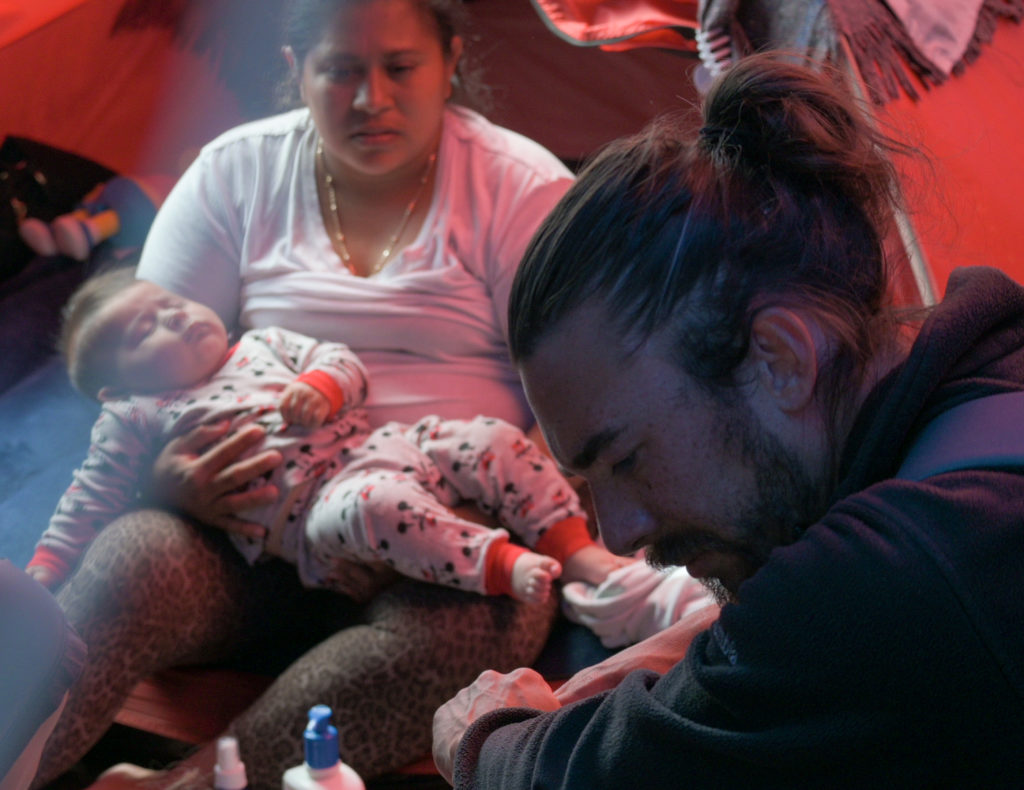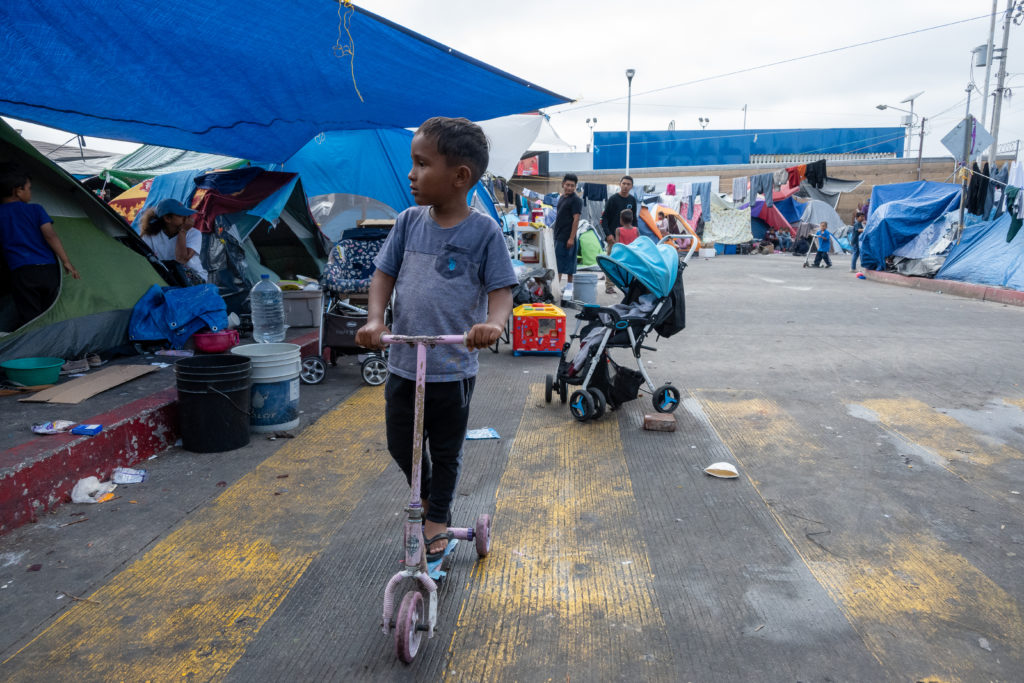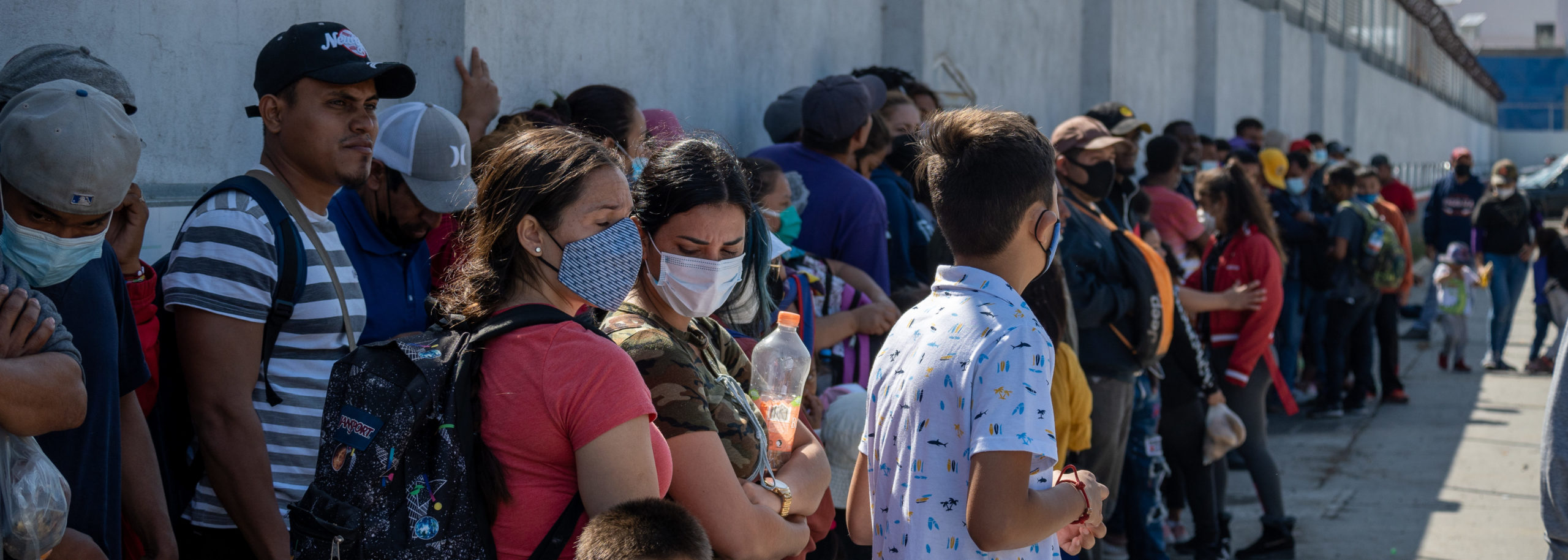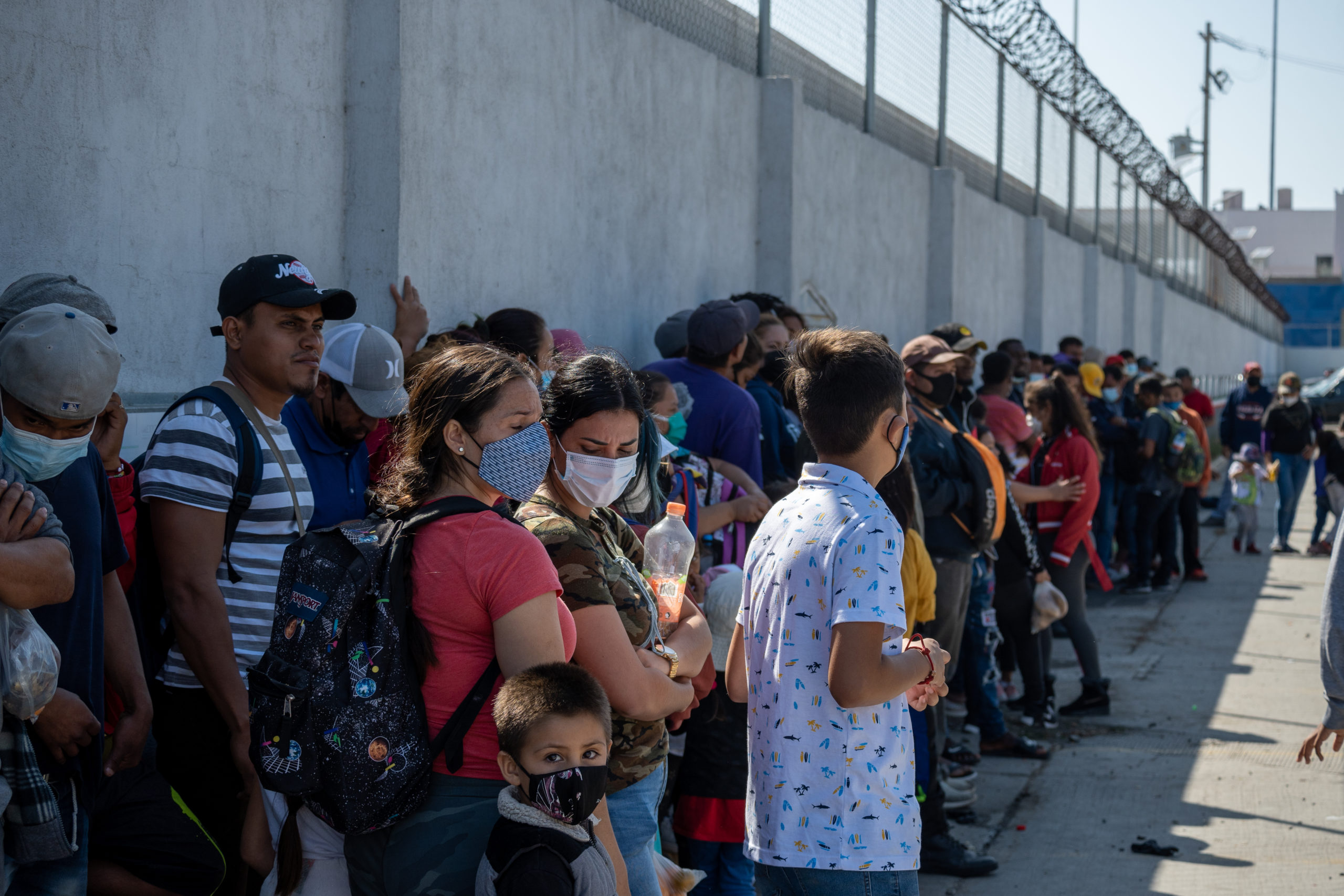Published: 07/28/2021
Stanford Global Health Media Fellow Chris Rios traveled to Tijuana during the pandemic to document the hardships of asylum-seeking families awaiting their chance to enter the United States.
Video and article by Christopher Rios.
In a final move of desperation, with her month-old son in her arms and her husband and six-year-old daughter just behind, Honduran refugee Mildre Morales climbed the wall hoping that the authorities on the other side would be understanding.
They were not.
“We did not have a chance to talk,” said 30-year-old Honduran refugee and spouse of Mildre, Carlos Morales. “She had a C-section for the baby, and she hurt herself when she jumped the wall, and they took her to San Diego Hospital.”
After offering Morales a few medicines in San Diego, the family was taken back to Tijuana in an armored car. They were never asked any questions. They were never offered a chance to tell their story, Morales said.
“We weren’t lucky enough to be allowed to stay there, and they sent us back to El Chaparral.”

Migrant families currently wait at the US-Mexico border in Tijuana, Mexico – living in squalor and constant fear. Thousands live in the informal tent camp, El Chaparral, that arose after an influx of migrants arrived in February 2021, and hundreds more live in the migrant shelter, El Templo, that sits on a hill just outside of central Tijuana.
The story of the Morales family is unique, but not uncommon.
Most families have fled violence in their home countries of Honduras, El Salvador or Guatemala – but some have fled from as far as Haiti, Cuba, or Cameroon – and are hoping to seek refuge with family in the United States.
Carlos and Mildre Morales fled their home of Choluteca, Honduras in early 2019 – forced to flee facing imminent danger from gang violence after Carlos witnessed a gang-member murder a neighbor.
“You can’t mess with the gangs. If you do, they’re going to make your whole family disappear. And if you go report that somebody is hurting you, the police will tell them that you were the one who reported them, and they’ll tell them where you live,” Morales said. Their journey illustrates how the violence and instability of living as a migrant affects the health of every member of the family.

They arrived in Tapachula, Mexico – a city at Mexico’s southern border – March, 2019. While arriving in Mexico meant the family was safe from gang persecution in Honduras, life was still not easy. During their first weeks in Mexico, they were robbed of the only $500 they had brought with them.
“When I lost the money, we slept in the park,” Morales said. “We spent three nights there with no money, no clothes, and no food. We were in God’s hands.”
Isabel was four-years-old at this time as she traveled with her parents fleeing violence. Isabel has an undiagnosed rheumatologic/allergic condition that causes her to develop itchy rashes on her arms, legs, and face. She has received treatment intermittently since leaving Honduras and regularly runs out of the lotions that help quell her symptoms.
Mildre also has her own health problems.
“No, her health is not fine.” Carlos said. “She has to be strong because sometimes she gets sick. Sometimes it gets so bad she cannot breathe.”
When she was 12-years-old, she was told she had a heart murmur, and now she says she often gets short of breath. She was also told she has high blood pressure, Carlos said.
But Mildre thinks her symptoms are related to anxiety and stress. “Sometimes, when I’m overthinking or when I worry about something, it bothers me.”
Then on January 1st, 2021, pulled out of his mother’ belly, Carlos Abraham Morales Ramos entered the world. Mildre cannot say with certainty why she required the Caesarian section.
Since the delivery, neither Mildre nor Carlos Jr. have seen a doctor, except for after crossing the border when Mildre urgently went to San Diego Hospital.
Since then, the family has been living in El Chaparral.
“At first we didn’t have a tent here. We spent five days under the cold weather, and, thank God – he [Carlos Jr.] only got sick once, just once. Look, he’s better now,” Carlos said. “He got a cold and he was coughing because of the change in weather.”

Carlos Sr. says he does not have any health concerns of his own, but the health of his family weighs on him. He is especially concerned with his daughter’s development during these critical years and the way her skin condition is affecting her socially.
“It hurts our soul to look at other children getting away from her because of her condition,” Carlos said. “They just keep staring at her. I’m worried about her skin, and I’m worried because she’s not going to school. She should already know the numbers at her age, the colors, ABCs.”
Now, the Morales family passes their days waiting in El Chaparral. They have seen a lawyer and now wait for their number to be called so they can plea their case for asylum. Hoping this time will be different.
“It’s a very difficult road. There are moments when you would like to disappear,” Carlos said. “Like when you see children suffering. It has happened to us with our daughter when she says, ‘Mom, I’m hungry,’ when you know that you don’t have a coin in your wallet… It’s hard.”
Some names have been altered in this story to protect the identity of interviewees.

